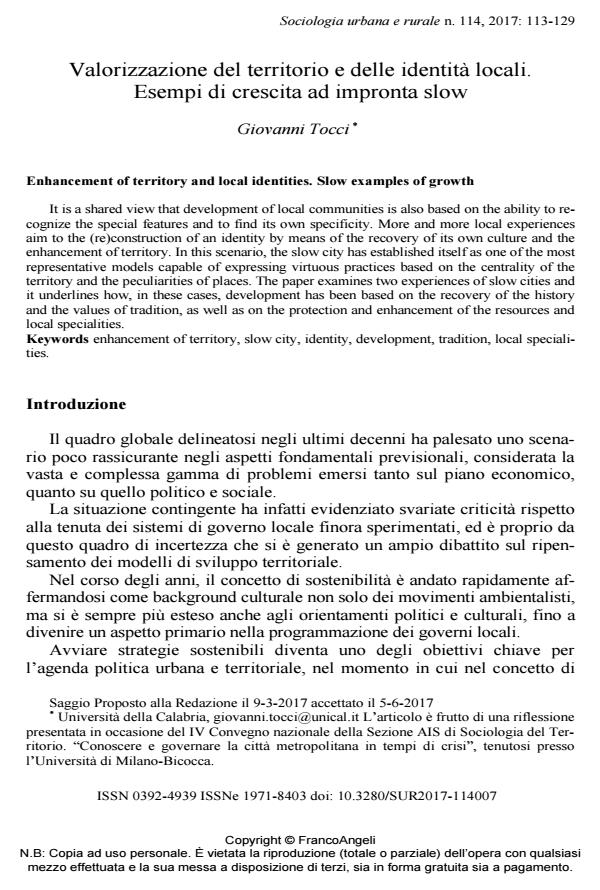Enhancement of territory and local identities. Slow examples of growth
Journal title SOCIOLOGIA URBANA E RURALE
Author/s Giovanni Tocci
Publishing Year 2017 Issue 2017/114
Language Italian Pages 17 P. 113-129 File size 402 KB
DOI 10.3280/SUR2017-114007
DOI is like a bar code for intellectual property: to have more infomation
click here
Below, you can see the article first page
If you want to buy this article in PDF format, you can do it, following the instructions to buy download credits

FrancoAngeli is member of Publishers International Linking Association, Inc (PILA), a not-for-profit association which run the CrossRef service enabling links to and from online scholarly content.
It is a shared view that development of local communities is also based on the ability to re-cognize the special features and to find its own specificity. More and more local experiences aim to the (re)construction of an identity by means of the recovery of its own culture and the enhancement of territory. In this scenario, the slow city has established itself as one of the most representative models capable of expressing virtuous practices based on the centrality of the territory and the peculiarities of places. The paper examines two experiences of slow cities and it underlines how, in these cases, development has been based on the recovery of the history and the values of tradition, as well as on the protection and enhancement of the resources and local specialities.
Keywords: Enhancement of territory, slow city, identity, development, tradition, local specialities.
- An Investigation into the Quality of Wines: Evidence from Piedmont Marco Delmastro, in SSRN Electronic Journal /2005
DOI: 10.2139/ssrn.667946
Giovanni Tocci, Valorizzazione del territorio e delle identità locali. Esempi di crescita ad impronta slow in "SOCIOLOGIA URBANA E RURALE" 114/2017, pp 113-129, DOI: 10.3280/SUR2017-114007